3∙ Circular Open Source Fashion¶
4th to 11th October 2022
Update
- October, 2022
- January, 2023
- April, 2023
Assignments
- Include some inspiration: research on artists or projects that work with modules and zero waste systems
- Document, Design and prototype with paper and scissors modular configurations and interlocking connections
- Document, Design and prototype digitally your modular configurations and interlocking connections in 2D
- Document the process of testing and laser cutting your designs, including the machine settings, material type and thickness
- Laser cut the modules. Create a modular or seamless garment, showing that the connection is well-designed and holds the pull/stretch. Document the assembly process and tests
- Upload the fabrication file at. The file should be in pdf format, in correct scale accompanied by 1-5 pictures(preferably in white background)
Ressources of the week
Today our instructor is Zoe Romano to Milan. She co-funded Wemake a makerspace and digital social innovation company. She work to Clotho - Designed for symbiotic living.
The course of this week talk about :
- Rethinking the concept of production: Agile fashion
- Zero Waste
- Modular Fashion
- Tessellation
- Interlocking
Some references Zoé Romano share with us :
-
The Earth Logic fashion action research plan warns of the unacceptable climate, environmental and social impacts of the fashion industry. Earth Logic can be summarised into seven essential elements of action to profoundly rethink fashion and put the health and survival of our planet Earth before business interest and economic growth
-
Book in pdf : Earth Logic. Fashion Action Research Plan by Kate Fletcher & Mathilda Tham
-
Book : Open Design Now: Why Design Cannot Remain Exclusive. Open Design Now is a collaborative effort of Creative Commons Netherlands, Premsela, the Netherlands Institute for Design and Fashion and Waag Society.
Research & Ideation¶
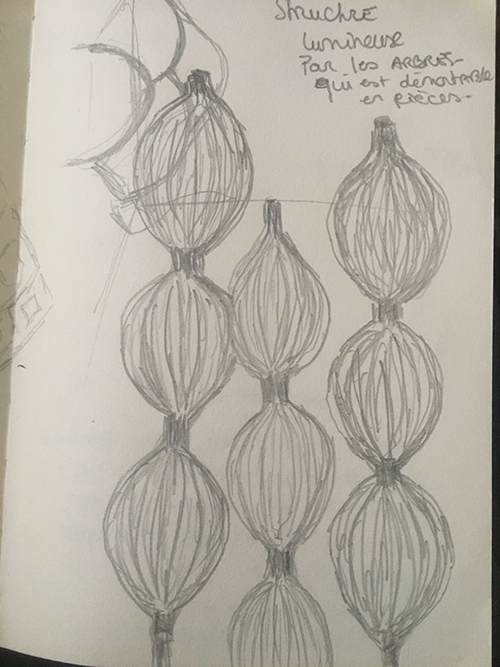
My first idea was to make a light structure with enough volume with this notion of how is possible to make something biggest and in same time easy to assemble and disassemble with less ecological impact.
References & Inspiration¶
After the courses my inspiration running with mixing architecture, nature, artists of biomaterials, cycle of life.
Tadao Ando¶
The geometric form and light with Tadao Ando, Japan architect of nature and concrete. "I tried to embody this concept of 'invisible architecture' through a method that allows geometrically designed spaces to unfold by following the natural topography." The impermanence of things, their fragility, which is very present in the Shinto tradition, is one of the key elements in understanding the work of Tadao Ando. A dimension that Frédéric Migayrou, curator of the exhibition "Tadao Ando, le défi" at the Centre Pompidou, did not fail to note: "He is an architect who invents his own language. He will reinvent the language of Le Corbusier in a relationship to Japanese tradition.Source

Agri Chappel by Yu Momoeda¶
Fractal form we found in architecture of the Agri Chappel by Yu Momoeda
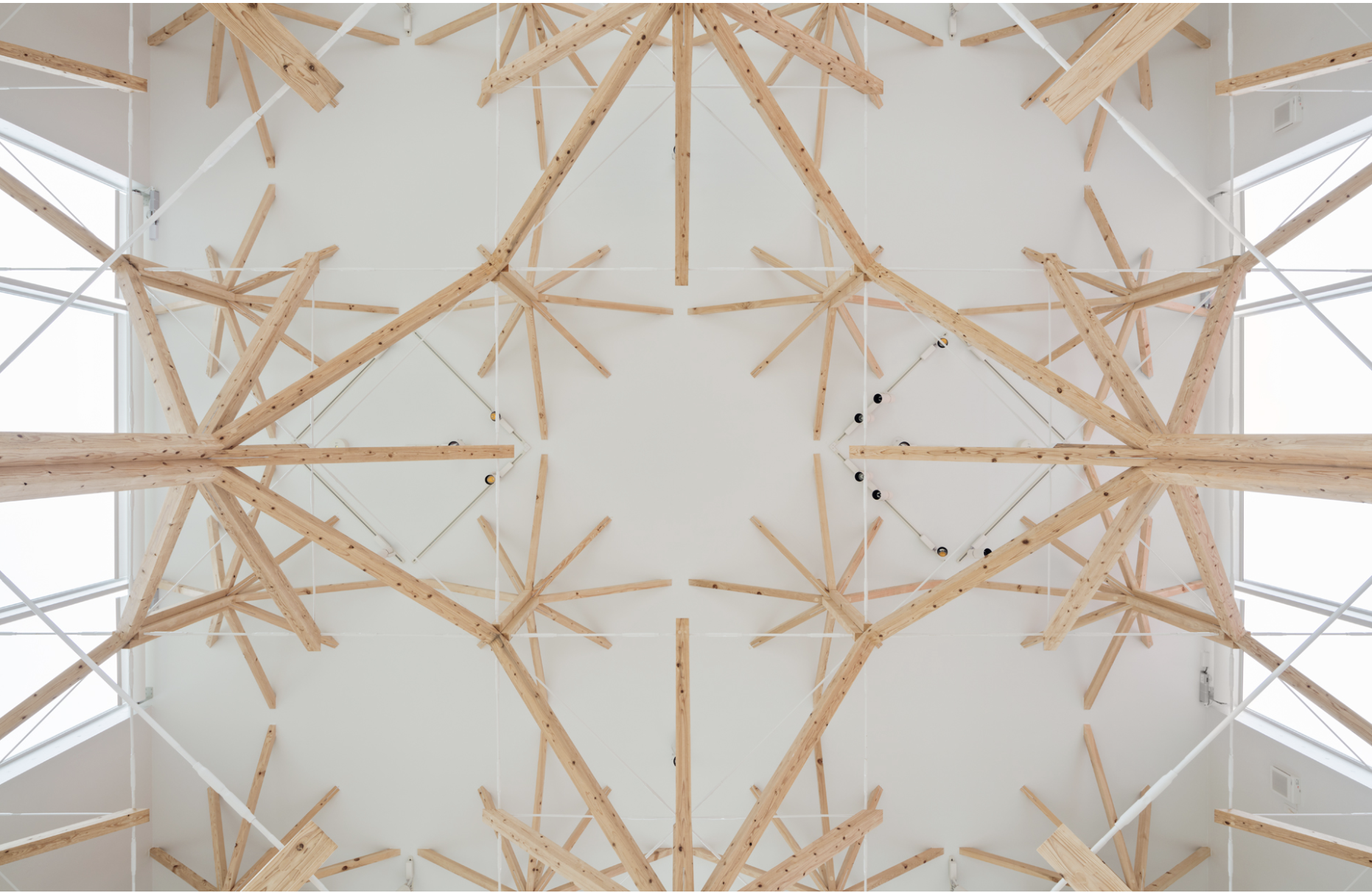
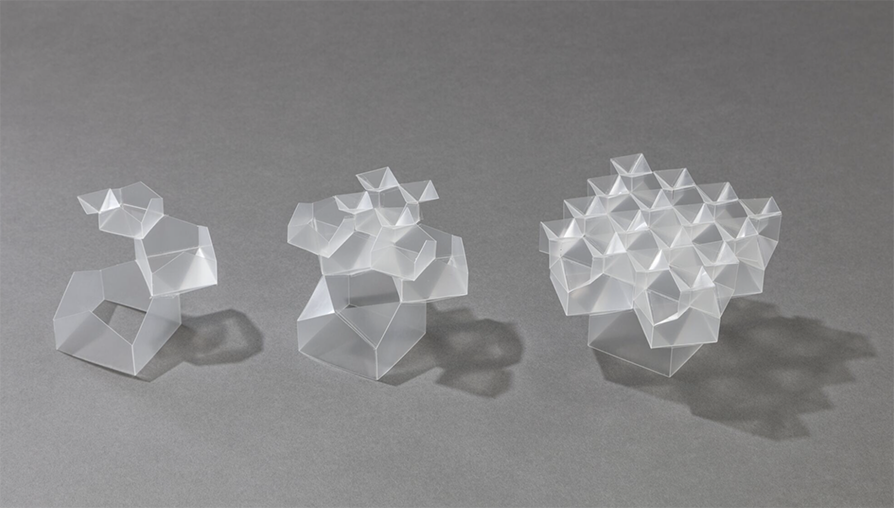
Nejiri Arigata's, kanawa tsugi.¶

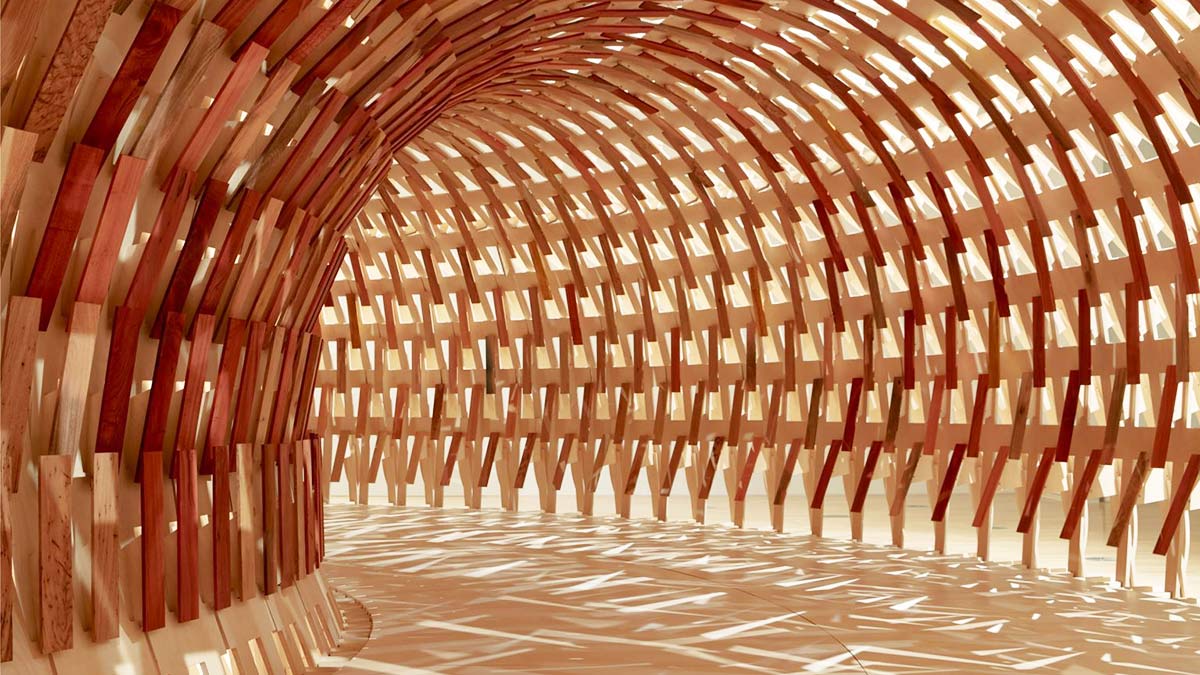
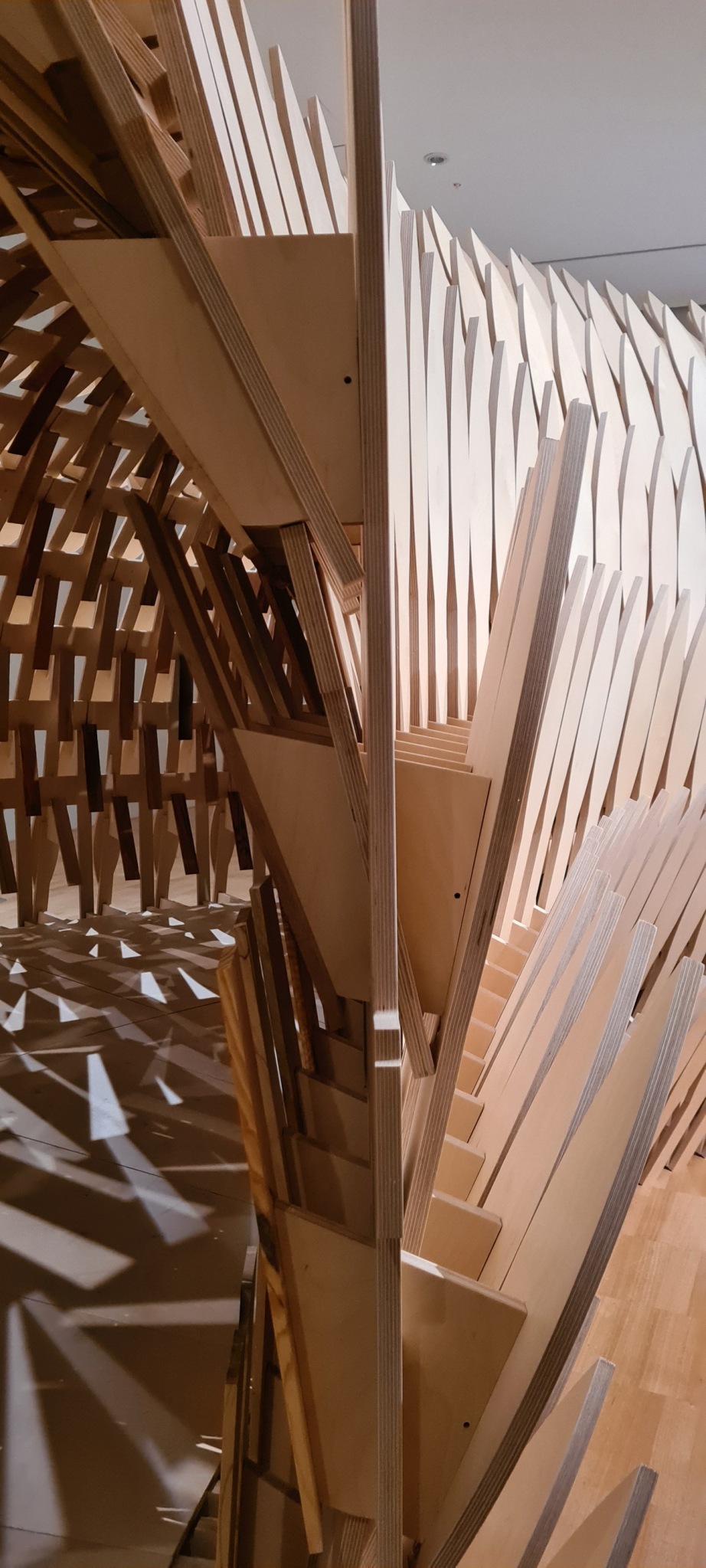
The module we talk during the courses make me reference to the assemblage of the techniques in architecture that uses kissing to assemble pieces of wood like Kengo Kuma.
It is one of the main techniques used for the construction of temples in Japan. The techniques of the carpenter's trade that uses kissing to assemble pieces of wood.
Nature with the bees.¶

.
Xuanlynn Wang¶
The transparence and texture of the biomaterio, inspired by the work of Xuanlynn Wang. She is a multidisciplinary artist who blends printing, photographs, material creation, and performing to practice and tackles the potency of symbiotic relations between human beings and their natural surroundings.
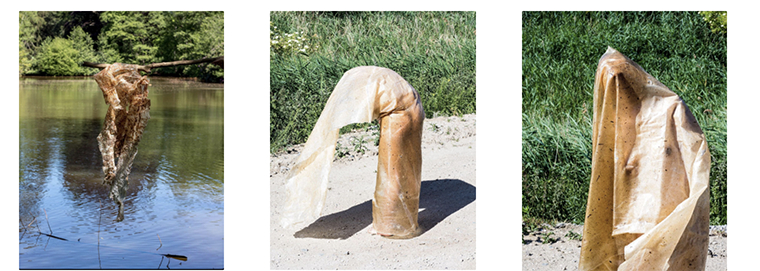
The Earthship¶
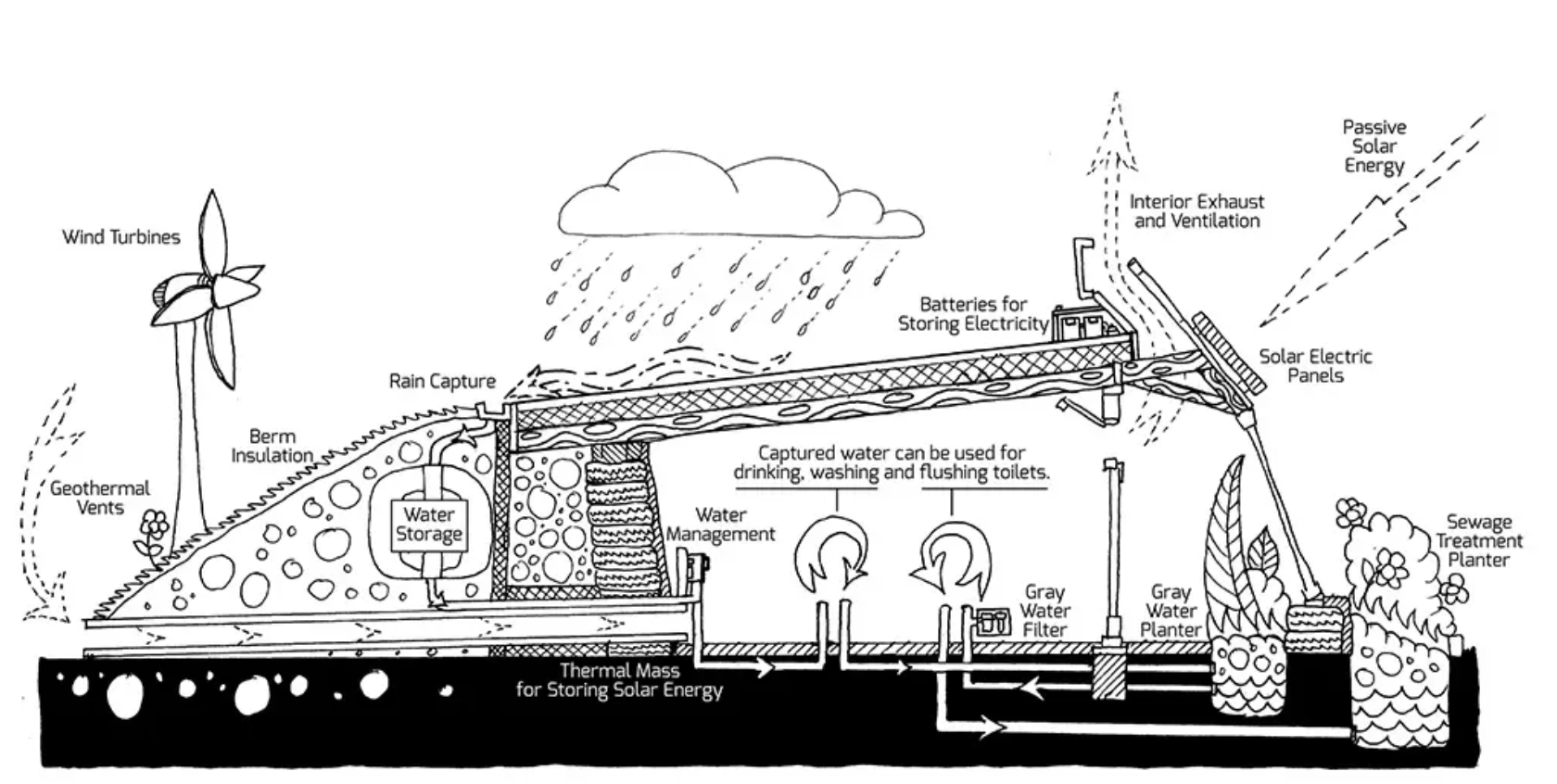
The ecological part and how is possible to reuse our trash and rubbish feel me going about Earthship or geonef, biotecture. are house autonomous. It's an environmentally friendly, low-cost self-built home based on the recovery and recycling of materialsand. Aswell the speciment of the Black soldier flies, the larvae of this tiny insect feed on waste products, reduce the carbon footprint of the agri-food production cycle, and can be turned into animal feed, fuel and fertilizer..
The Ten cards.¶

About distance of the project and the globality it's make me reference to The Ten cards, in pdf created my MISTRA. Textile Toolbox is TED’s web platform project for MISTRA Future Fashion. The project within the research consortium aims to create systemic and profitable change within the fashion industry through ‘interconnected design thinking for sustainable textiles and fashion’, or New Design Processes.
Modules by Maite Sosa Methol, alumni fabricademy.¶
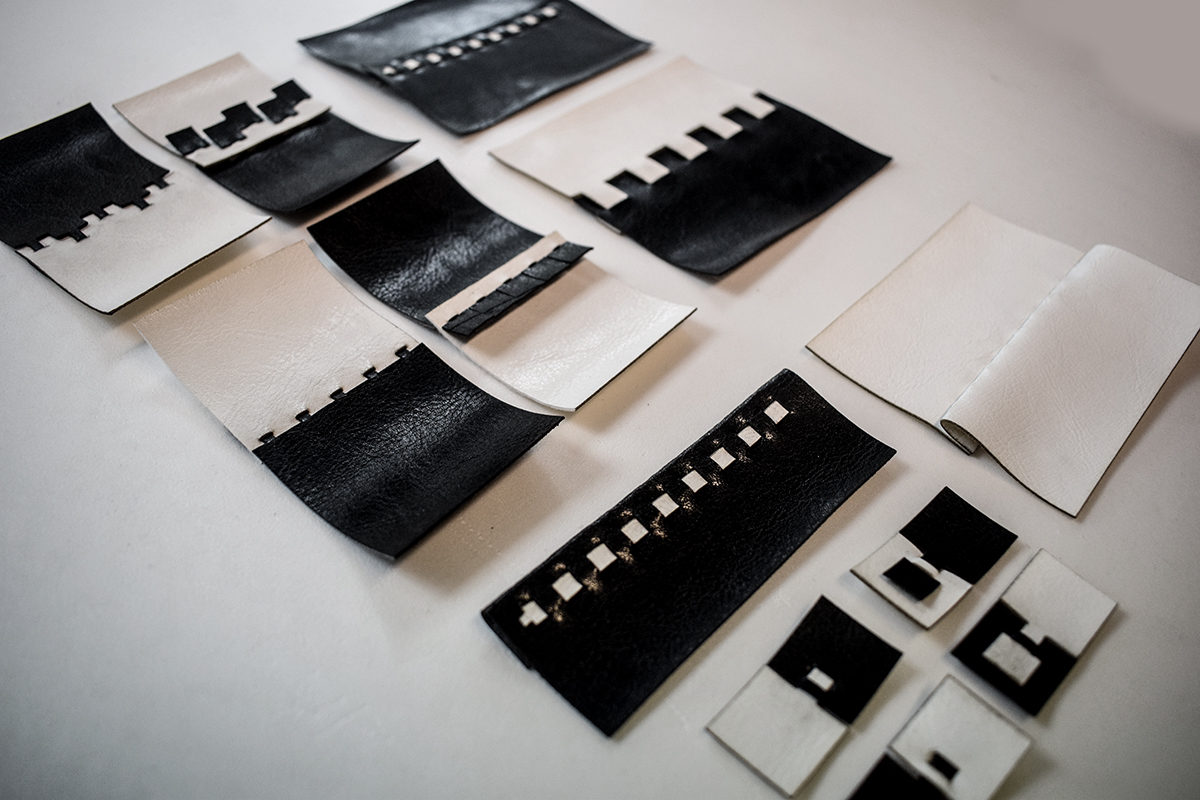
Tools & Materials¶
| Material | Details |
|---|---|
| Fabric | Paper, tulle, felt fabric |
| Tools | Scalpel, rule, cutting board, cissors, pencil, rubber |
| Software | Illustrator |
| Machine | Laser cutting R400, Rayjet 100 watt glass tube machine, Cutting table size 1030x 630mm |
| Fabrication files | Download modules |
Process & workflow¶
I start with paper, scalpel and rule.
My conditions was to have :
-
Geometric form
-
3D form for having a volume
-
Having something open for the light
-
Resistant for arriving to make a structure
-
Texture smooth and gentle
-
Making little with not a lot of model maximum 60.
-
Want to use a module for trying in biomaterial for the next time in more bigger.
At the beginning I got stuck on the squares. I had a hard time to get out of it and see further. A walk with Marion allowed me to take a step back on the situation.
Our exchanges on the empty and full, shadows and light. his idea to insert the square in the center. Afterwards it was an ode to the breakup of the square to leave a hexagon in the center and recreate the structures of the cells of bees.
I had a hard time understanding how the notch and attachment system could work, I couldn't visualize it in space. Laora showed me her prototype and it was a revelation on how the "+" and "-" worked to attach together. I was able to continue my prototype by adding cutouts.
Process of the test¶
1 - Interlocking paper 2D design / sketch and test : using grids 2- nesting : svg nest
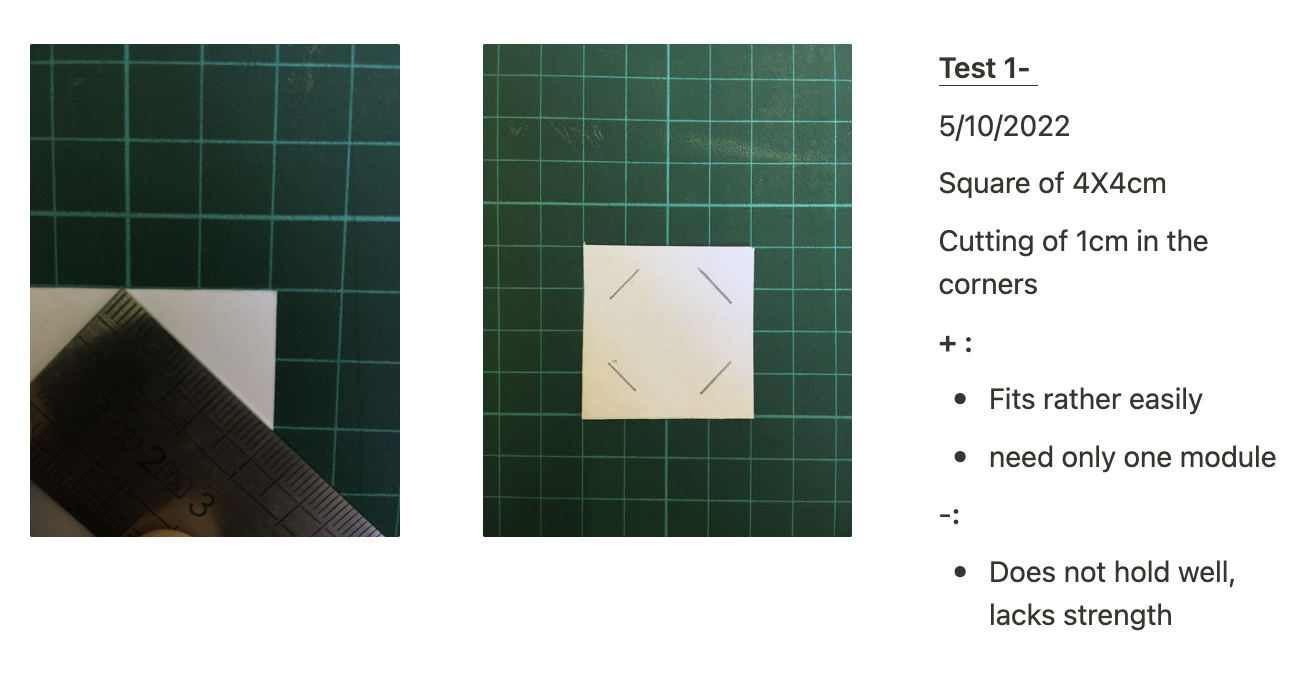

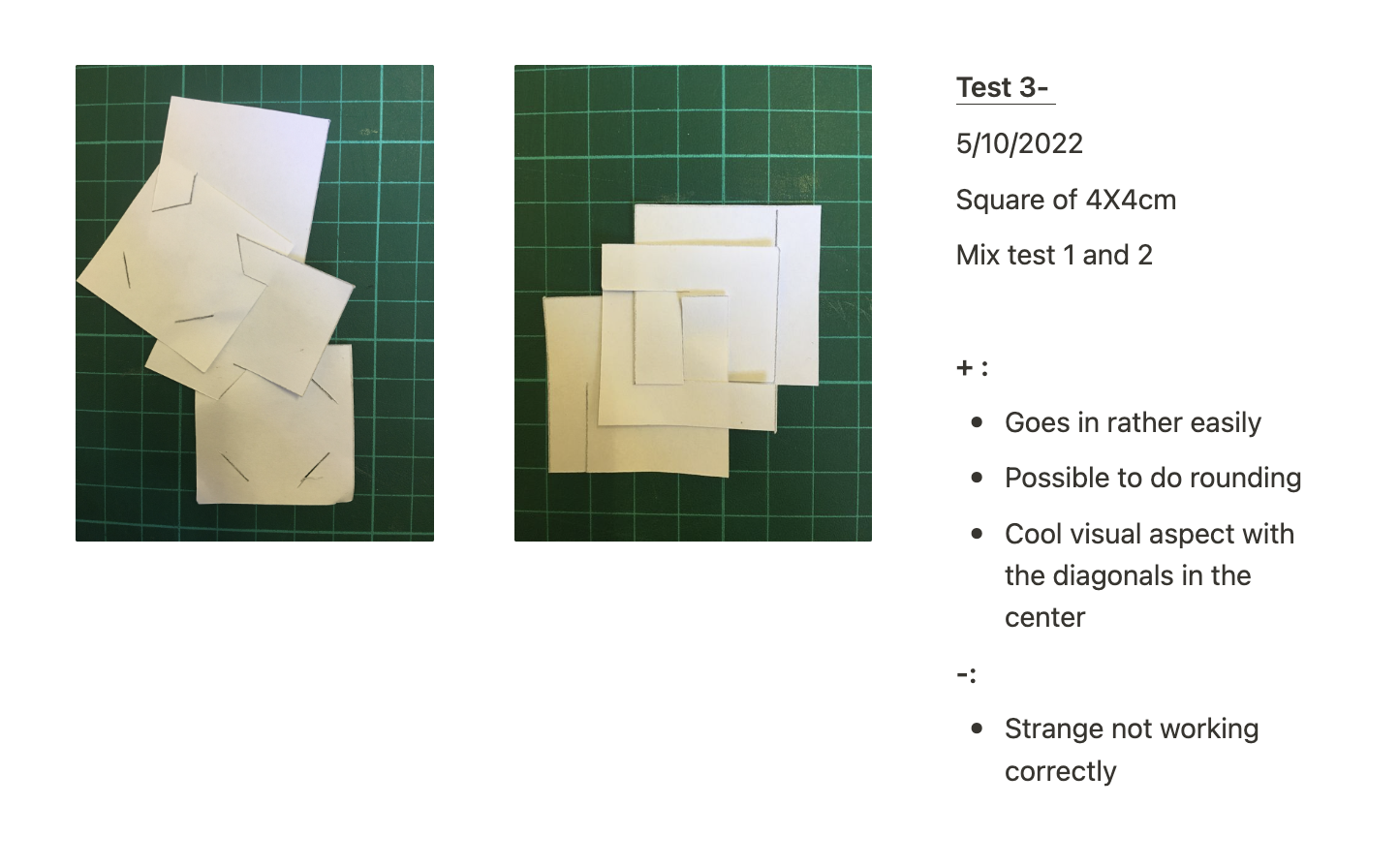

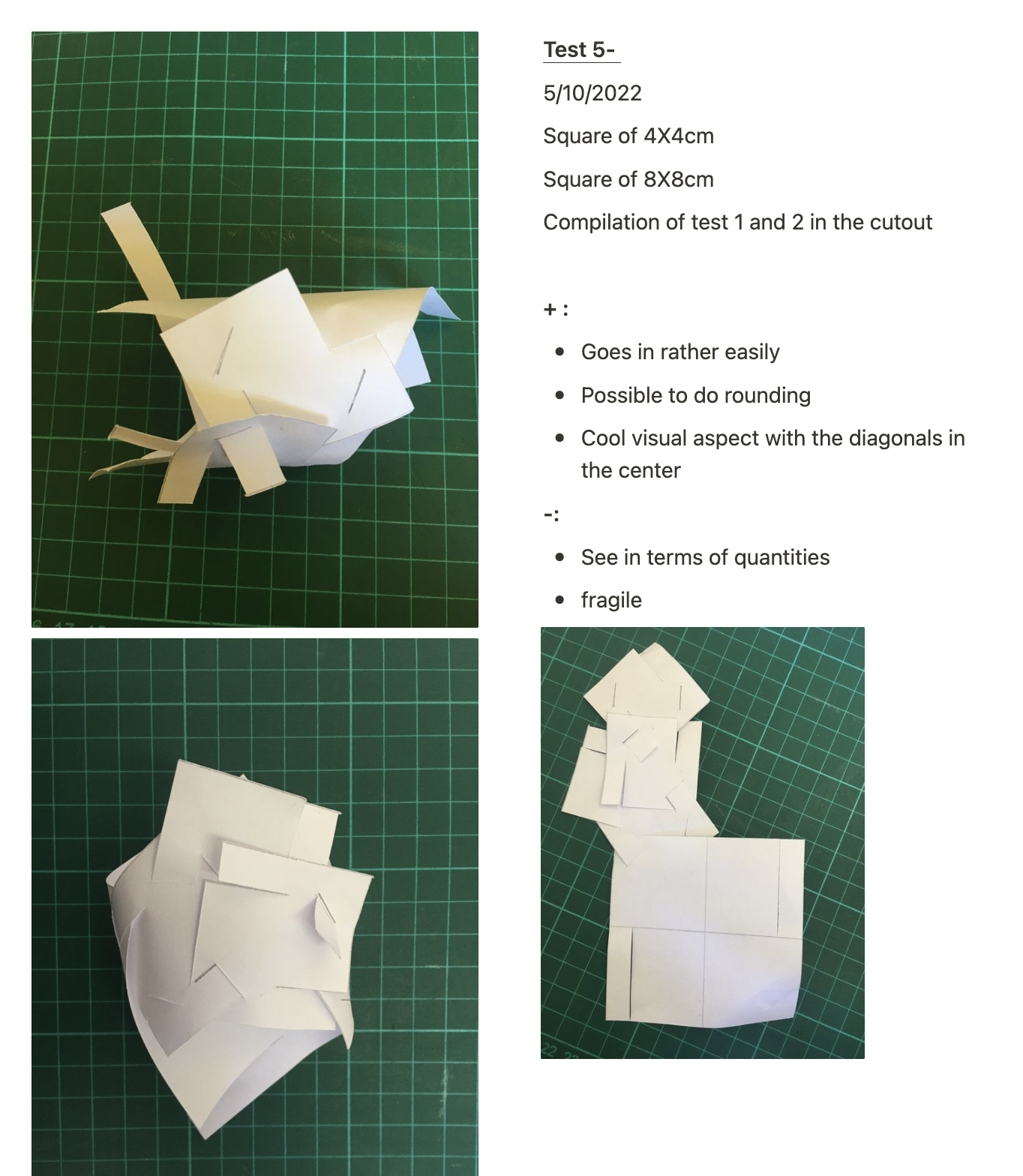
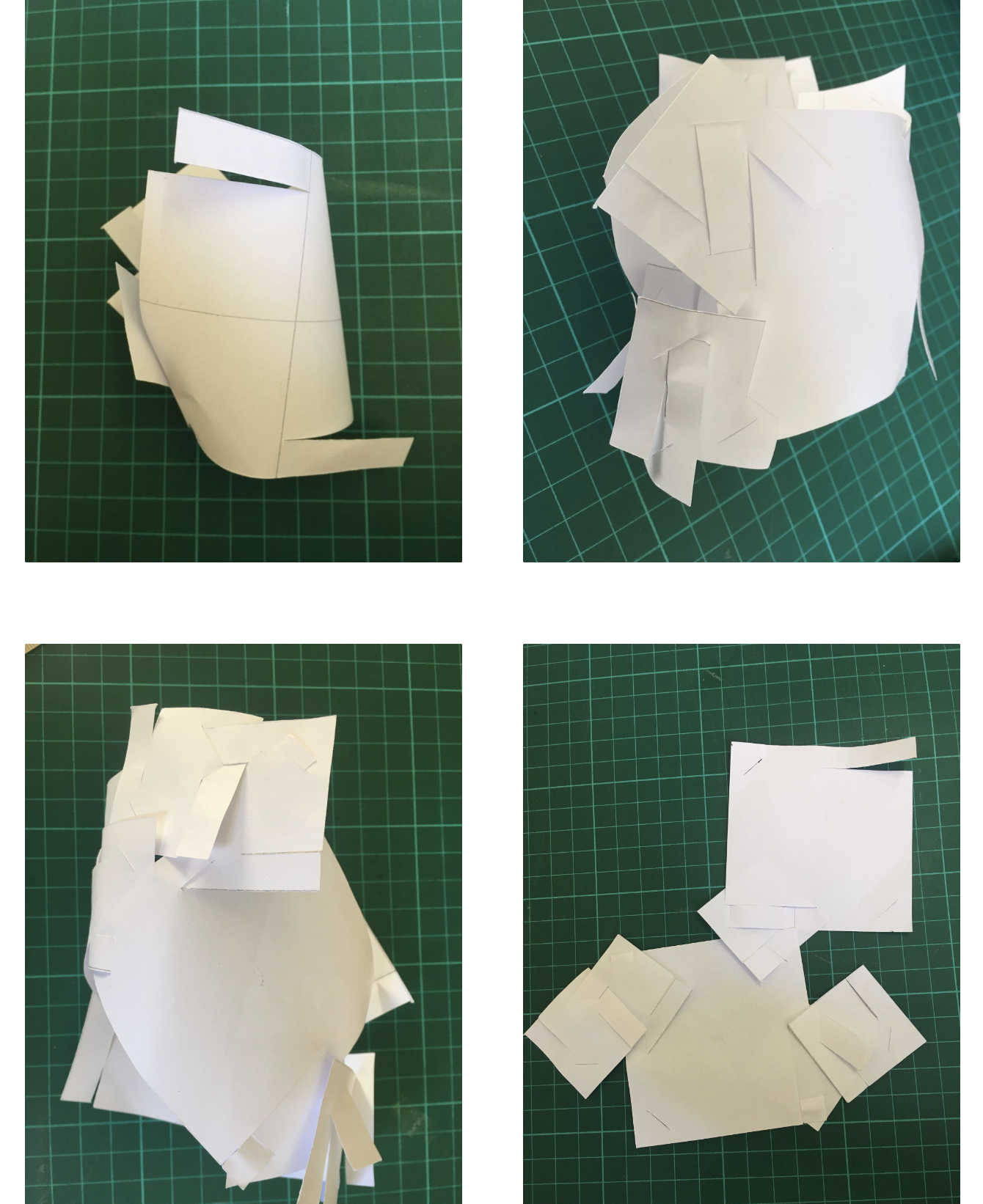

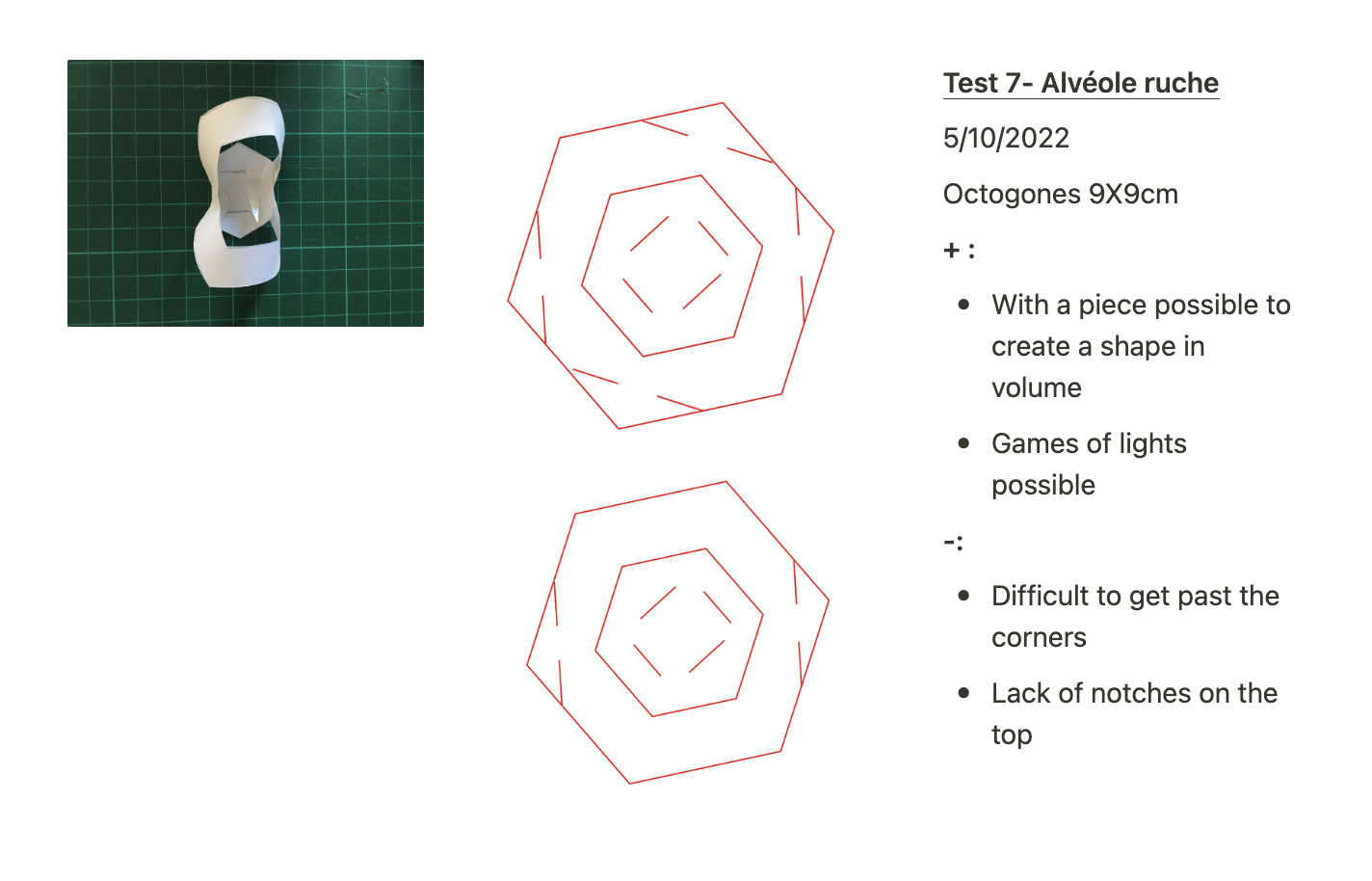
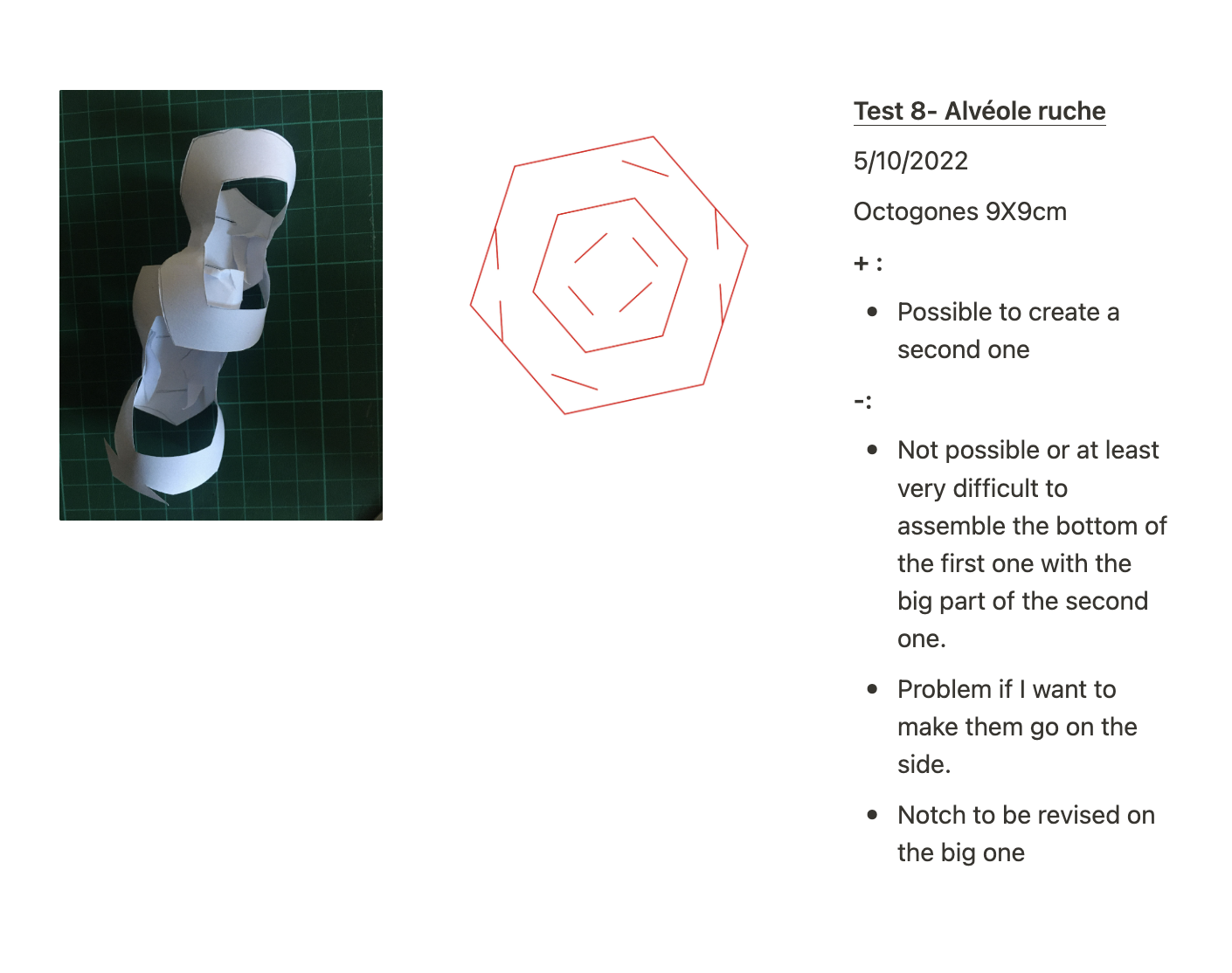
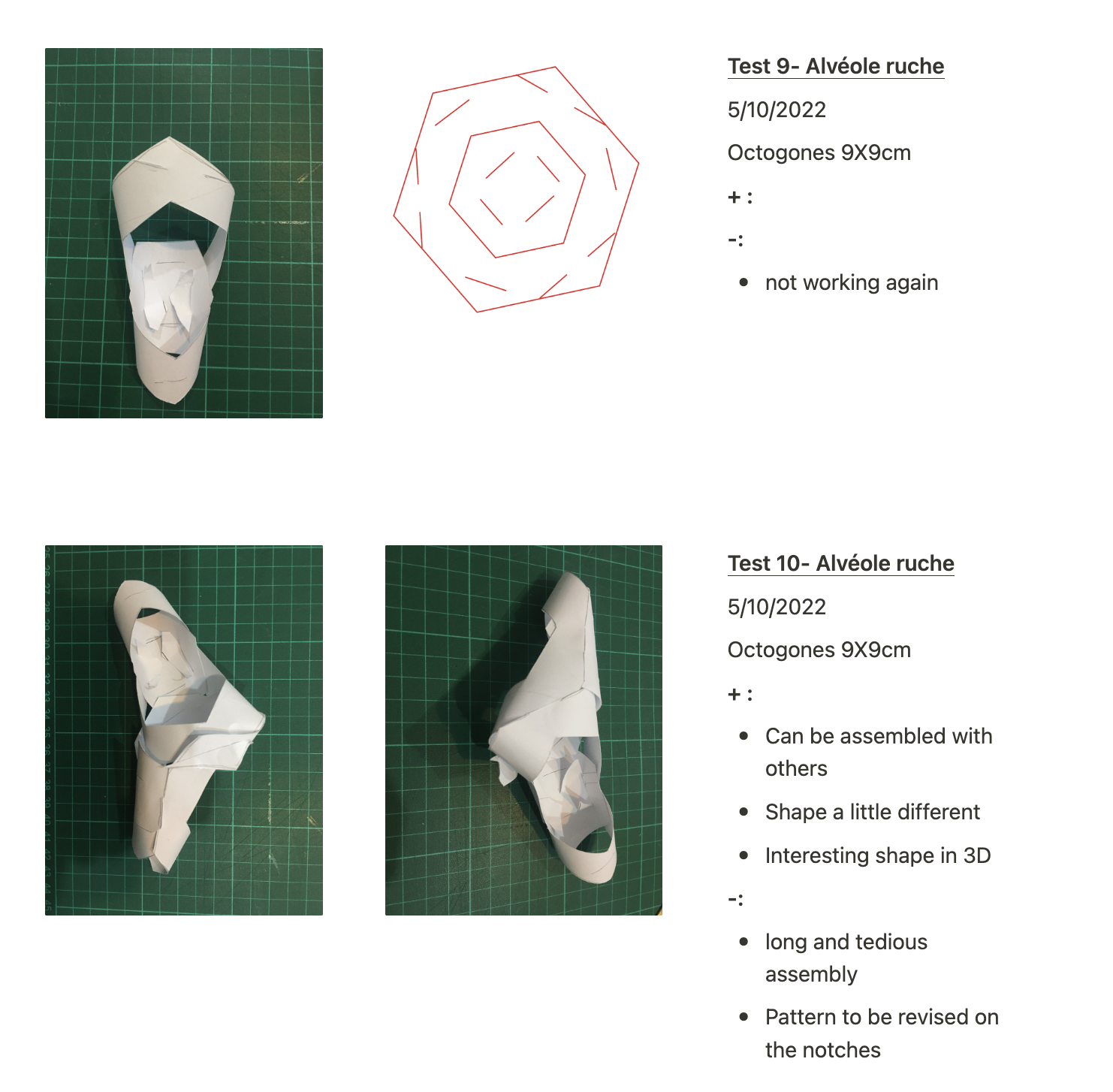
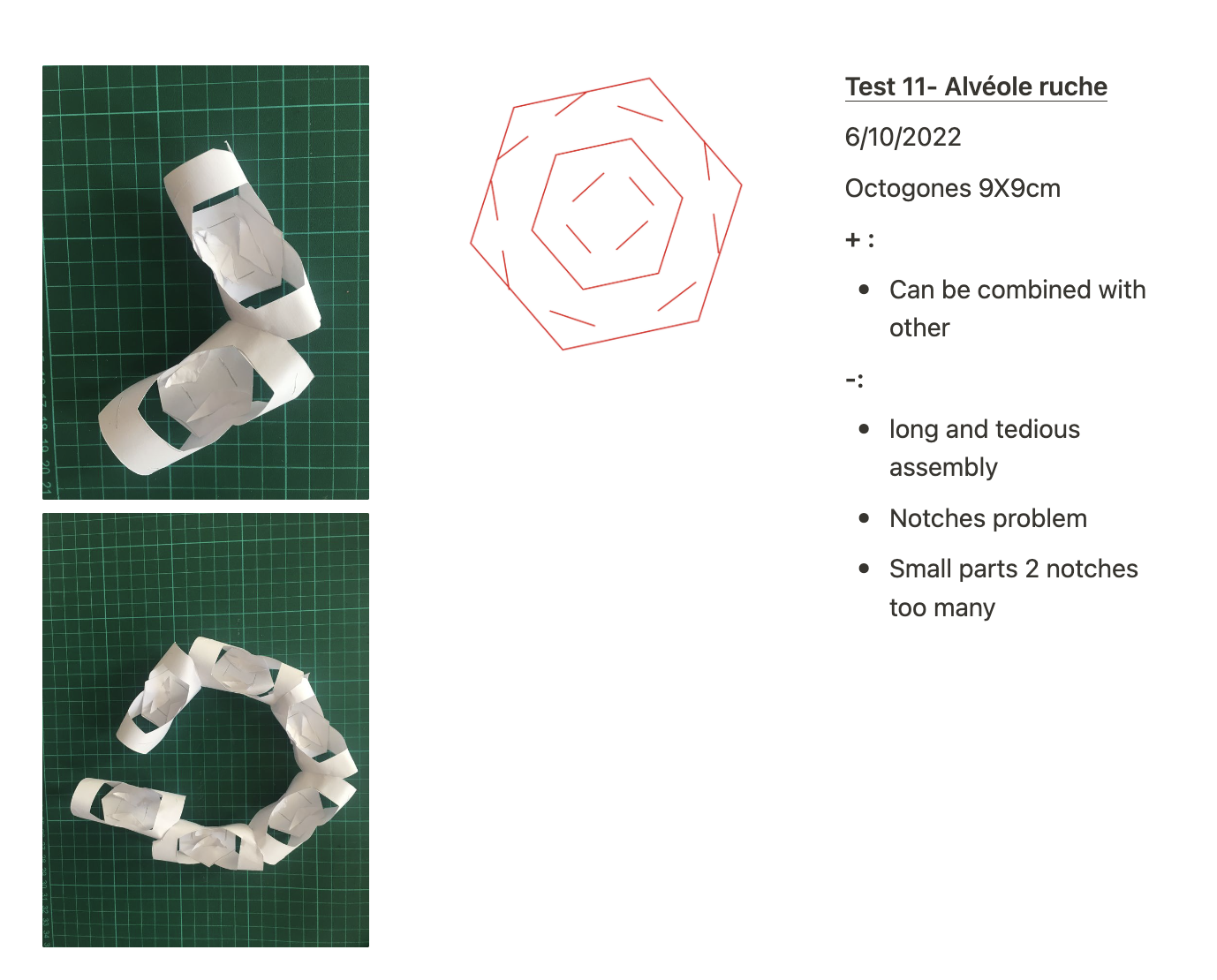
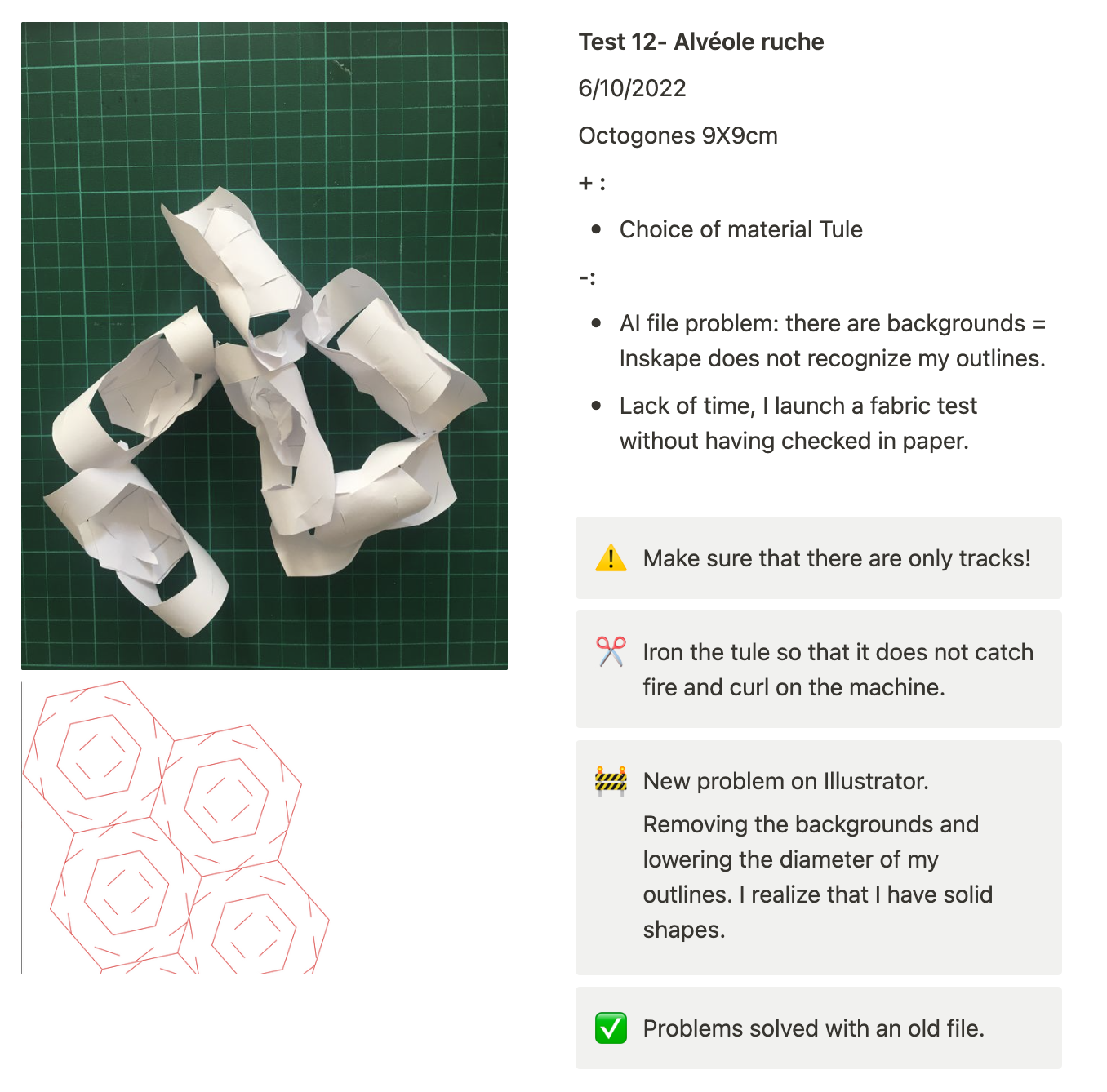
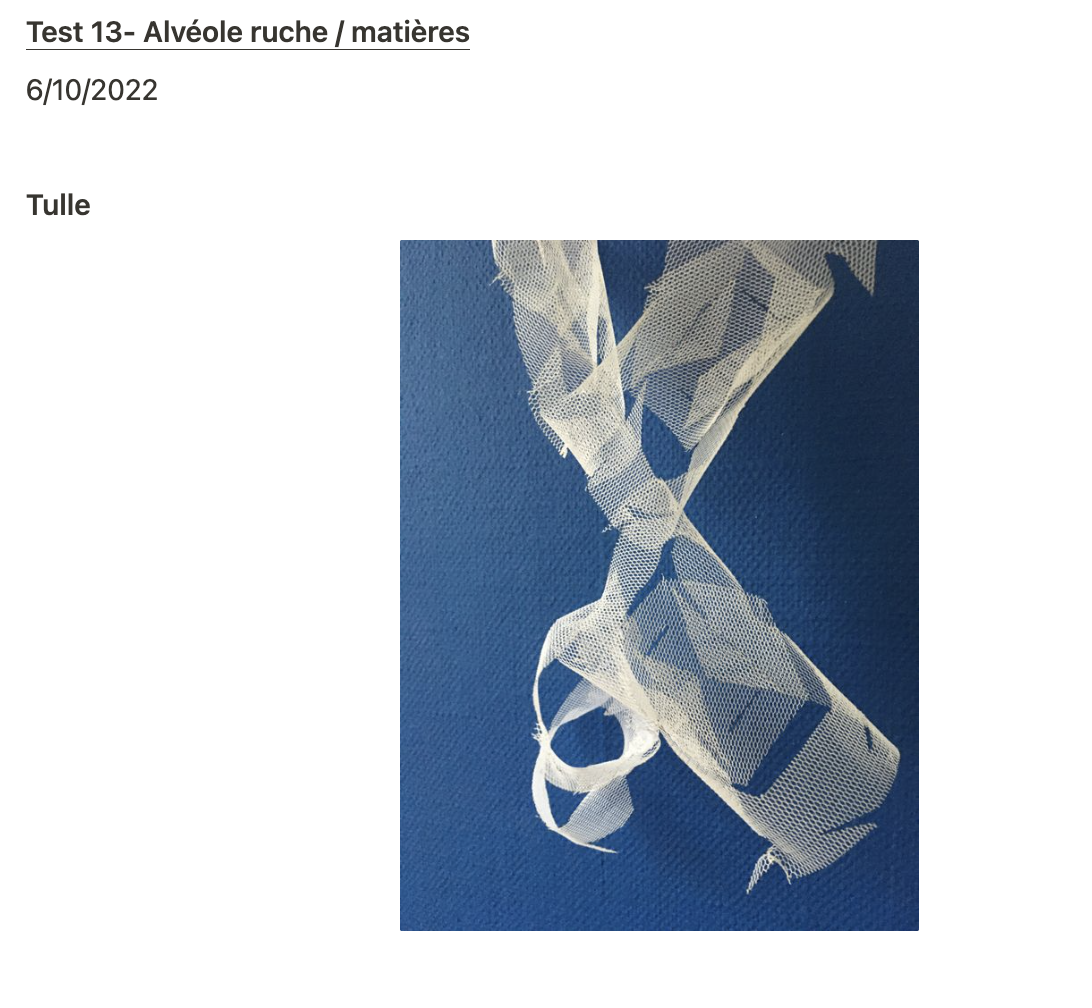
The tulle is very light and flexible and finally too transparent aswell difficult to assemble.
 I turned to felt fabric found at the lab for making my test. I was satisfy of the resistance, solidity and transparancy for making the modules.
I turned to felt fabric found at the lab for making my test. I was satisfy of the resistance, solidity and transparancy for making the modules.
 The obtimization of the module needs to be improved. The pieces between have been used by a girl of the lab for tests that's why they are cut
The obtimization of the module needs to be improved. The pieces between have been used by a girl of the lab for tests that's why they are cut
Step 1 - Prototype¶

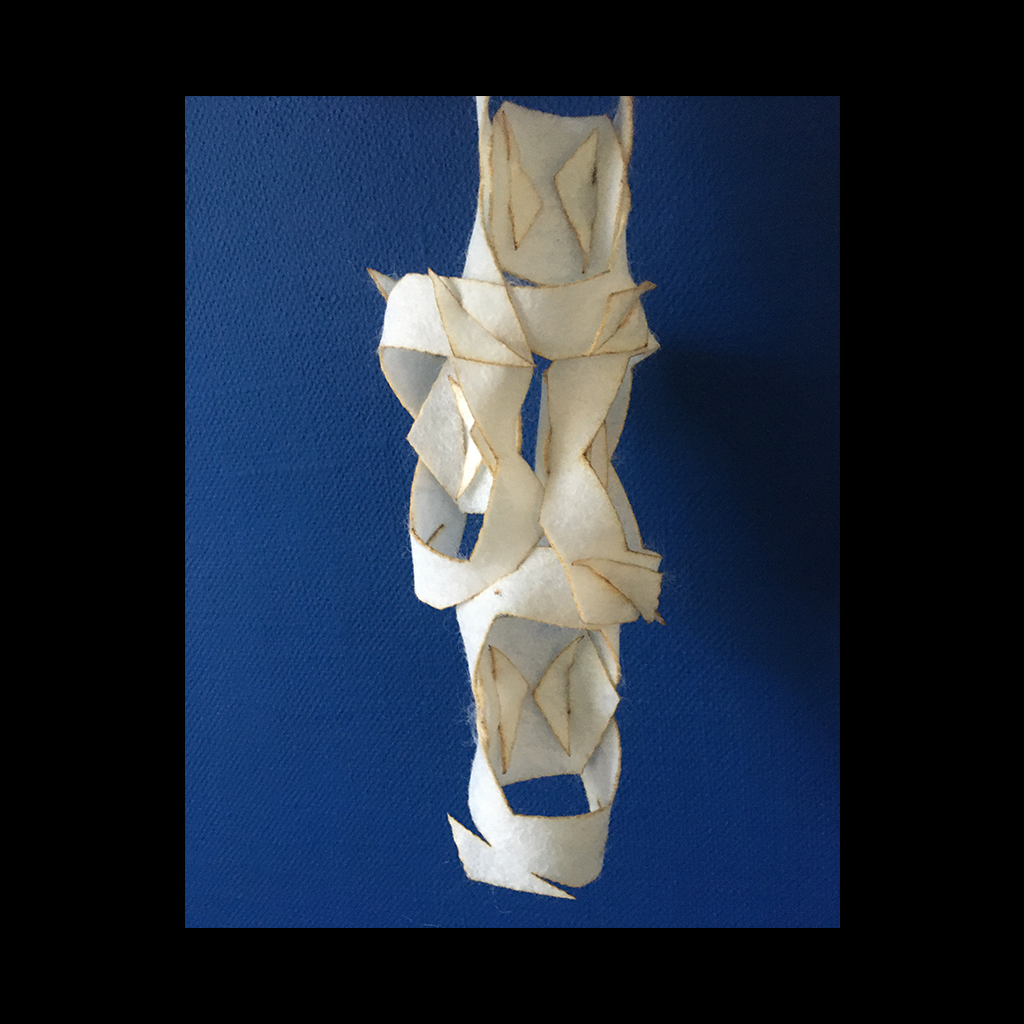
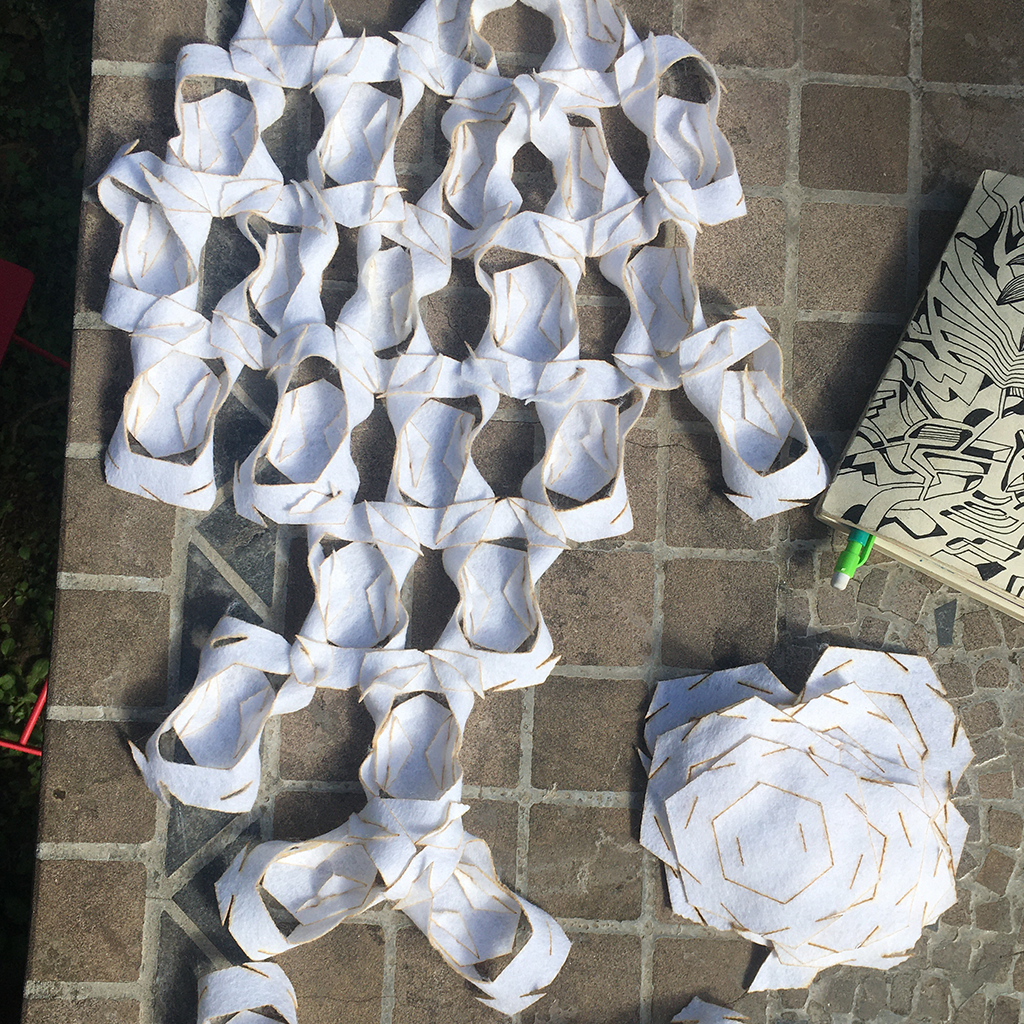
For this final prototype I use a feutrine with natural fabric inside. The laser cutting process in the Laora Guillerm page, we use the same fabrics.
| Chosen material | white woollen felt |
|---|---|
| Thickness | About 3mm |
| Engraving (black) | Semi-cutting (red) | Cutting (blue) | |
|---|---|---|---|
| Power | 20.00 | 90.00 | 95.00 |
| Speed | 30.00 | 40.00 | 35.00 |
| PPI/Hz | 500 |
Step 2 - Deconstruct, Clean and Rebuild¶
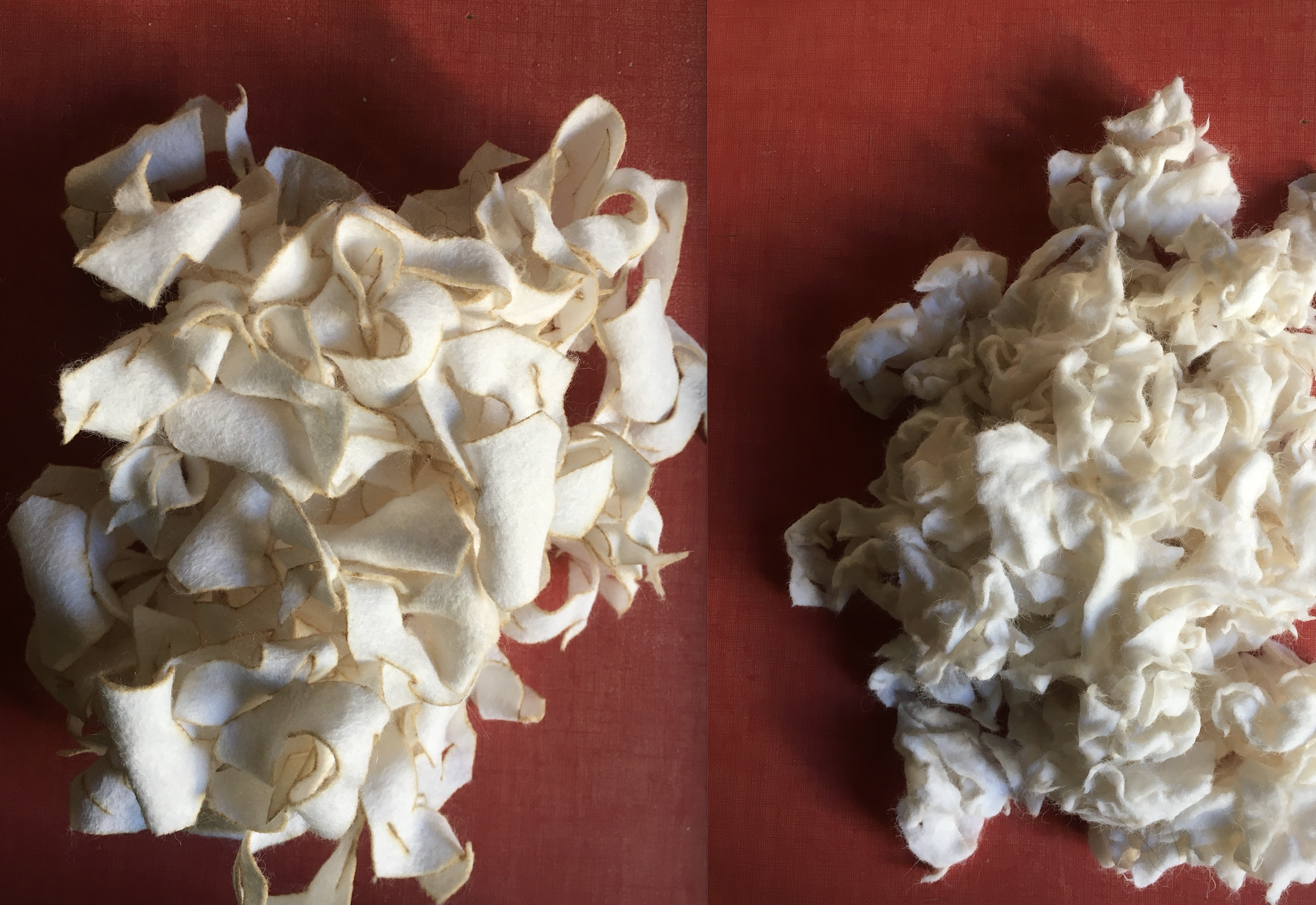
I was wanting to go in the circular process of how it’s possible to reuse it. I decided to wash the same modules.First they was smelled really bad. The resistance and the fonction of the material was changing. The material was more stronger but impossible to use the original form. The propriety of fabric change completely with water.

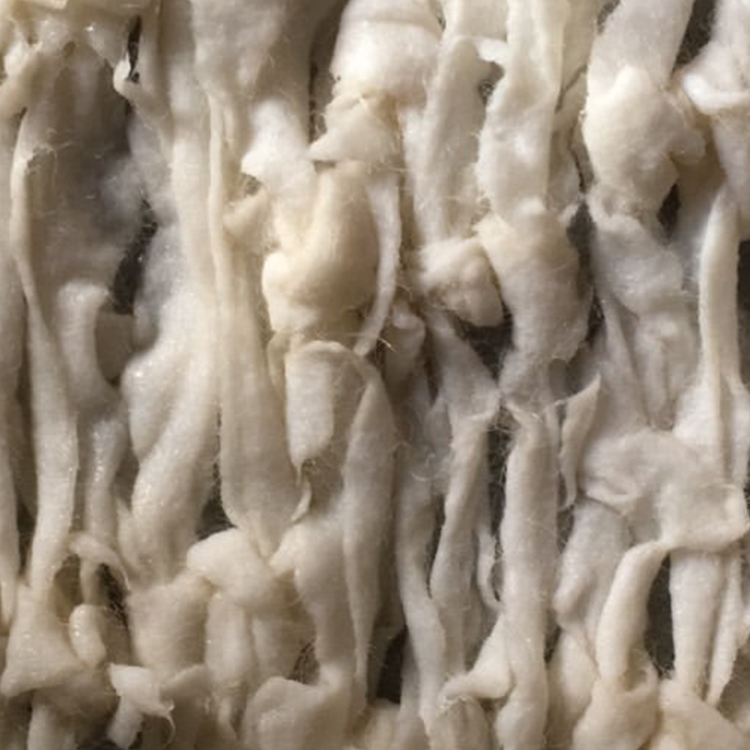
Reflexions¶
I forget to take the time in consideration during the montage, the easily utilisation and the odour of the fabric we need it for the final realization in my first conditions too. Now I understand how is important to take all senses in consideration.
I would like to make this more bigger and in biomaterial. And I thinking to make evolution of my first drawing. Aswell I would like to test more new form in the laser and trying to use the graphic part of my drawing for see how is possible to make an another drawing or painting with material and different texture. Like a big puzzle.